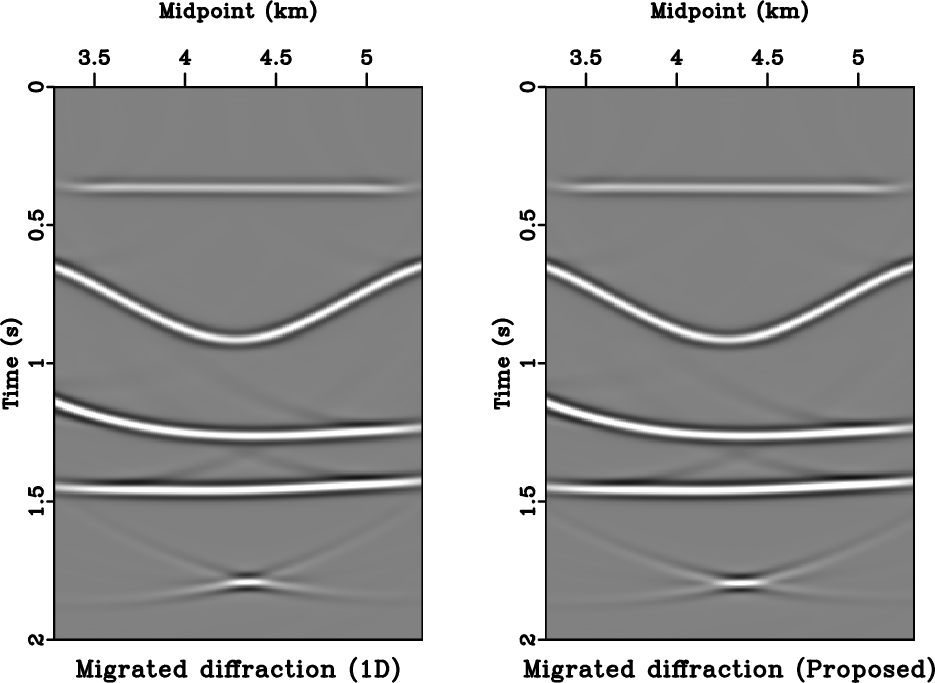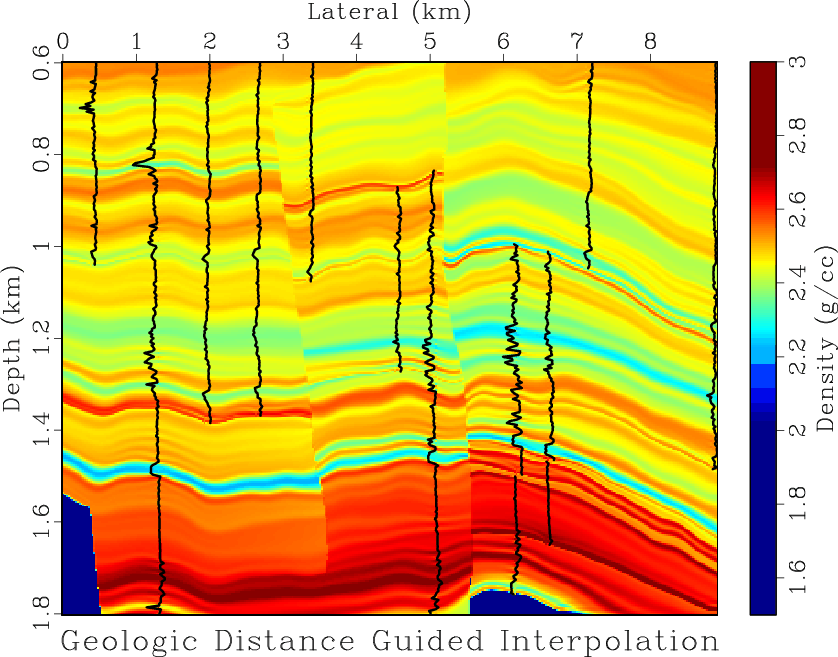An old paper is added to the collection of reproducible documents: Effects of lateral heterogeneity on time-domain processing parameters

Time-domain processing of seismic reflection data has always been an important engine that is routinely utilized to produce seismic images and to expeditiously construct subsurface models. The conventional procedure involves analysing parameters related to the derivatives of reflection traveltime with respect to offset including normal moveout (NMO) velocities (second-order derivatives) and quartic coefficients (fourth-order derivatives). In this study, we propose to go beyond the typical assumption of 1-D laterally homogeneous medium when relating those ‘processing’ parameters to the subsurface medium parameters and take into account the additional influences from lateral heterogeneity including curved interfaces and smoothly variable velocities. We fill in the theoretical gap from previous studies and develop a general framework for such connection in layered anisotropic media. We show that in general, the influences of lateral heterogeneity get accumulated from all layers via a recursive relationship according to the Fermat’s principle and can be approximately quantified in terms of the lateral derivatives of the layer interface surfaces and velocities. Based on the same general principle, we show that our approach can also be used to study the lateral heterogeneity effects on diffraction traveltime and its second-order derivative related to time-migration velocity. In this paper, we explicitly specify expressions for NMO and time-migration velocities with the influences from both types of heterogeneity suitable for 2-D data sets and also discuss possible extensions of the proposed theory to 3-D data sets and to parameters related to higher-order traveltime derivatives. Using numerical examples, we demonstrate that the proposed theory can lead to more accurate reflection and diffraction traveltime predictions in comparison with those obtained based on the 1-D assumption. Both the proposed theoretical framework and its numerical testing for forward traveltime computation presented in this study aid in understanding the effects from lateral heterogeneity on time-processing parameters and also serve as an important basis for designing an efficient technique to separate those influences in important processes such as Dix inversion for a more accurate subsurface model in the future.

